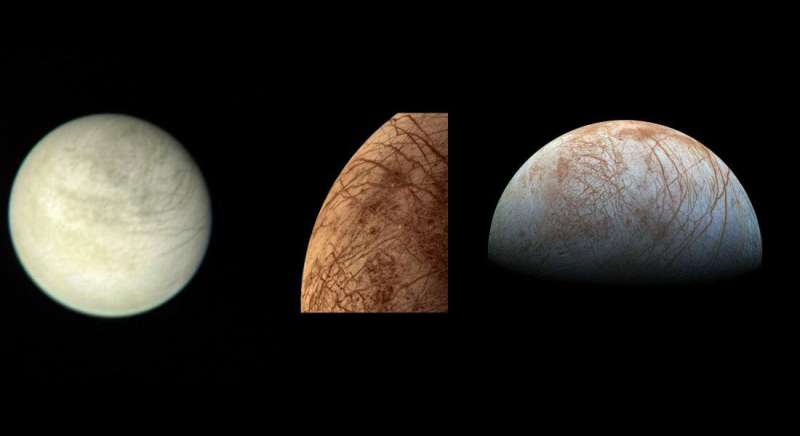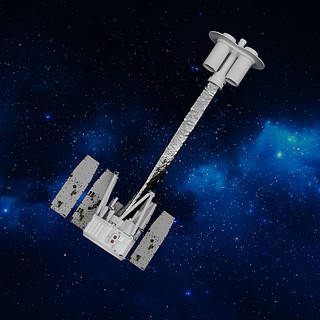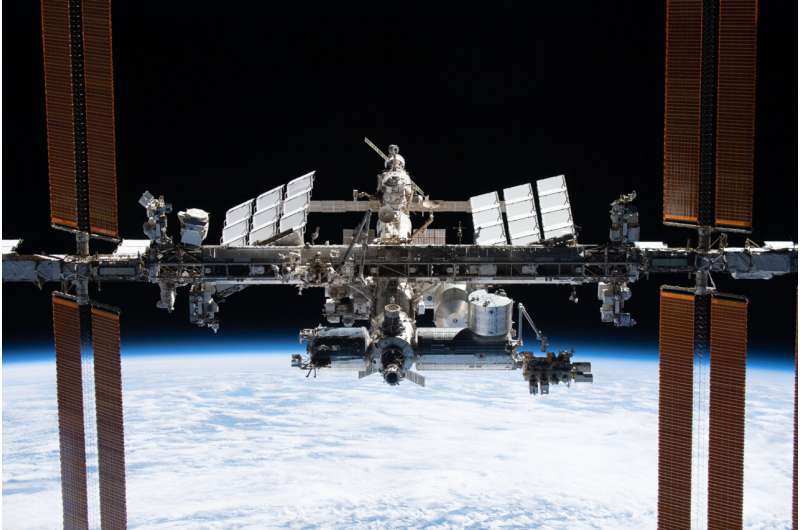
Copernical Team
New study shows the largest comet ever observed was active at near-record distance
 A new study by University of Maryland astronomers shows that comet Bernardinelli-Bernstein (BB), the largest comet ever discovered, was active long before previously thought, meaning the ice within it is vaporizing and forming an envelope of dust and vapor known as a coma. Only one active comet has been observed farther from the sun, and it was much smaller than comet BB.
The finding will
A new study by University of Maryland astronomers shows that comet Bernardinelli-Bernstein (BB), the largest comet ever discovered, was active long before previously thought, meaning the ice within it is vaporizing and forming an envelope of dust and vapor known as a coma. Only one active comet has been observed farther from the sun, and it was much smaller than comet BB.
The finding will NASA and industry embrace laser communications
 Our televisions and computer screens display news, movies, and shows in high-definition, allowing viewers a clear and vibrant experience. Fiber optic connections send laser light densely packed with data through cables to bring these experiences to users.
NASA and commercial aerospace companies are applying similar technologies to space communications, bringing optical speeds to the final
Our televisions and computer screens display news, movies, and shows in high-definition, allowing viewers a clear and vibrant experience. Fiber optic connections send laser light densely packed with data through cables to bring these experiences to users.
NASA and commercial aerospace companies are applying similar technologies to space communications, bringing optical speeds to the final NASA delays spacewalk to replace antenna at ISS due to debris danger
 NASA delayed a spacewalk that was scheduled to occur Tuesday morning, to replace broken hardware outside the International Space Station, due to a warning about possible dangerous debris.
NASA had planned for Thomas Marshburn, 61, and Kayla Barron, 34, to exit the space station about 7:10 a.m. EST for more than six hours. The spacewalk would be Marshburn's fifth and Barron's first.
NASA delayed a spacewalk that was scheduled to occur Tuesday morning, to replace broken hardware outside the International Space Station, due to a warning about possible dangerous debris.
NASA had planned for Thomas Marshburn, 61, and Kayla Barron, 34, to exit the space station about 7:10 a.m. EST for more than six hours. The spacewalk would be Marshburn's fifth and Barron's first. Elon Musk: SpaceX faces possible bankruptcy because of engine woes
 SpaceX founder Elon Musk told his employees the space company faces a "genuine risk of bankruptcy" because of its struggles in developing its engine for its Starship flights.
In an email obtained by the website Space Explored, Musk called the company's struggle with its Raptor engine production at its base in Boca Chica, Texas, a "crisis." The Starship is a hulking space vehicle created
SpaceX founder Elon Musk told his employees the space company faces a "genuine risk of bankruptcy" because of its struggles in developing its engine for its Starship flights.
In an email obtained by the website Space Explored, Musk called the company's struggle with its Raptor engine production at its base in Boca Chica, Texas, a "crisis." The Starship is a hulking space vehicle created Are water plumes spraying from Europa? NASA's Europa Clipper is on the case

Finding plumes at Europa is an exciting prospect, but scientists warn it'll be tricky, even from up close.
In 2005, images of a brilliant watery plume erupting from the surface of Saturn's moon Enceladus captivated the world. The giant column of vapor, ice particles, and organic molecules spraying from the moon's south polar region suggested that there's a liquid water ocean below Enceladus' ice shell and confirmed the moon is geologically active. The plume also thrust Enceladus and other worlds in the outer solar system, with no atmospheres and far from the heat of the Sun, toward the top of NASA's list of places to search for signs of life.
NASA TV to Air IXPE Prelaunch Activities, Launch
 NASA will provide coverage of the upcoming prelaunch and launch activities for the Imaging X-ray Polarimetry Explorer (IXPE) mission, the first satellite dedicated to measuring the polarization of X-rays from a variety of cosmic sources, such as black holes and neutron stars.
NASA will provide coverage of the upcoming prelaunch and launch activities for the Imaging X-ray Polarimetry Explorer (IXPE) mission, the first satellite dedicated to measuring the polarization of X-rays from a variety of cosmic sources, such as black holes and neutron stars. The Parker Solar Probe is getting pelted by hypervelocity dust. Could it damage the spacecraft?

There's a pretty significant disadvantage to going really fast—if you get hit with anything, even if it is small, it can hurt. So when the fastest artificial object ever—the Parker Solar Probe—gets hit by grains of dust that are a fraction the size of a human hair, they still do damage. The question is how much damage, and could we potentially learn anything from how exactly that damage happens? According to new research from scientists at the University of Colorado at Boulder (UCB), the answer to the second question is yes, in fact, we can.
Parker is cruising through the inner solar system on its orbit around the sun at a cool 180 km/s (400,000 mph). But the environment it is traveling through is anything but cool—the probe needs the help of a giant heat shield to ensure that the full force of a star doesn't entirely destroy its innards.
Space junk forces spacewalk delay, too risky for astronauts

Image: ISS captured from the SpaceX Crew Dragon Endeavour

It can be hard to appreciate that a human-made, football-pitch-sized spacecraft is orbiting 400 km above our heads, but there it is.
The jewel of human cooperation and ingenuity that is the International Space Station shines brightly in this image captured by ESA astronaut Thomas Pesquet from the SpaceX Crew Dragon Endeavour.
Crew-2 got this amazing view during a flyaround of the orbiting lab after undocking from the Harmony module on 8 November, before their return to Earth.
Since this image was taken, there has even been a new addition in the form of the Russian Node Module, known as Prichal. The final Russian module planned for the station, it is a spherical node attached to the Russian segment with six docking ports for future Progress and Soyuz arrivals.
A collaboration between five space agencies, the station has become a symbol of peaceful international cooperation for 23 years now. It represents the best of our space engineering capabilities as well as humankind's pursuit of scientific knowledge and exploration.
By any standards, it is an incredible piece of spacecraft engineering. Weighing 420 tons, it travels in low-Earth orbit at more than 27 000 km/hour, circling Earth approximately 16 times every day.
Micro-geostationary satellite wins ESA support

A small European telecommunications satellite intended for launch into geostationary orbit some 36 000 kilometres above the Earth – which can be used as a basis for future satellites – has won support from ESA.

